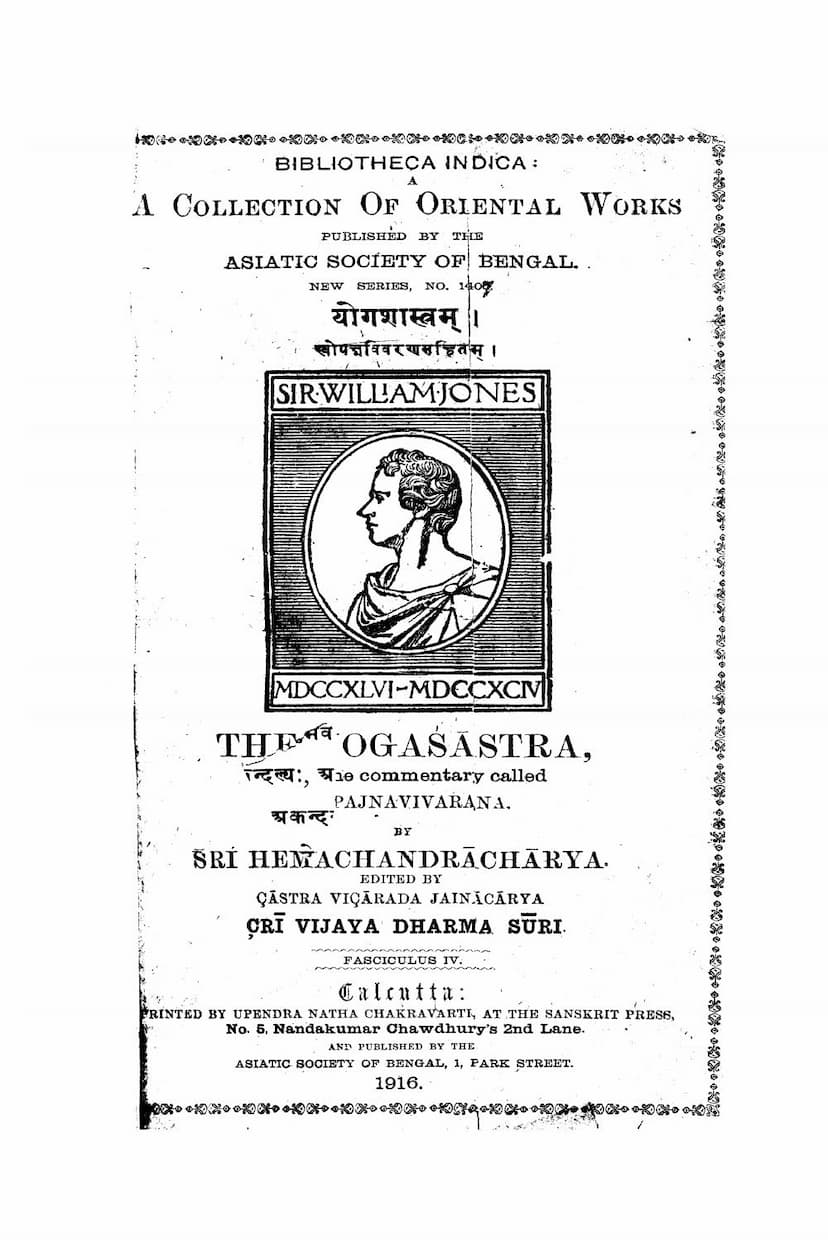Yogshastra Part 04
Added to library: September 2, 2025

Summary
This document is the fourth fascicle (part) of the Yogashastra, a Jain text authored by Hemchandracharya and edited by Shri Vijaya Dharma Suri. It was published by the Asiatic Society of Bengal in Calcutta in 1916.
The provided text (pages 3-43) appears to be primarily focused on:
-
Ethical Conduct and Social Responsibility of Lay Disciples (Shravakas):
- The text emphasizes the importance of associating with fellow virtuous individuals (sādharmika) and the merit gained from such association, especially through inviting them to religious observances, offering them good food, and providing gifts.
- It discusses the duty to help those in distress, even at personal expense, and to support those who are faltering in their religious practices.
- A significant portion of the text is dedicated to a discussion about the virtue and respectability of women within the Jain community. It addresses the common perception of women as being more prone to faults, but strongly refutes this generalization.
- It highlights that women, like men, can be virtuous, possess good qualities, and are capable of achieving spiritual advancement. Examples of virtuous women are mentioned, including mothers and sisters of Tirthankaras, and female lay disciples (shravikas) who were praised by Tirthankaras. The text asserts that women can possess chastity, contentment, and unwavering faith.
- The text argues for equal compassion and affection towards women, likening it to the affection shown to mothers, sisters, or daughters. It criticizes the notion of defaming all women based on the faults of a few.
- The concept of "Mahashravaka" (great lay disciple) is explored, emphasizing not only the giving of wealth to "seven fields" (seven categories of deserving recipients) but also compassionate giving to the extremely destitute and disabled.
- It elaborates on the qualities of a Mahashravaka: generosity, compassion, adherence to vows, and devotion to the path of Jainism.
-
Daily Rituals and Devotional Practices:
- The text outlines the daily routine of a lay disciple, starting with waking up at Brahmamuhurta (an auspicious time before dawn).
- It stresses the importance of reciting "Parameshthi Stuti" (prayers to the five supreme beings: Arihants, Siddhas, Acharyas, Upadhyayas, and Sadhus).
- The disciple is instructed to remember their Dharma (religion), kula (lineage/family), and vrata (vows).
- The importance of personal purity (shuchi) is detailed, including practices like attending to bodily cleanliness.
- The text describes the worship of the divine (Deva) at home using flowers, offerings (āmisha - edible substances), and hymns (stotra).
- It details the process of performing "Pratyakhyana" (renunciation or resolution) as per one's capacity.
- The disciple is then directed to proceed to the temple (Devagriha).
-
Temple Etiquette and Worship:
- Detailed instructions are given for entering the temple, including purification rituals and circumambulating the idol of the Jina (Tirthankara) three times.
- The method of worshipping the idol is described, involving offerings of flowers, incense, perfumes, lamps, food, and adornments.
- The text emphasizes the significance of proper conduct and inner devotion during worship.
- It discusses the importance of reciting prayers and hymns that praise the virtues of the Tirthankaras.
- The text distinguishes between different types of worship (jaghanya - inferior, madhyama - medium, utkṛṣṭa - superior) based on the rituals performed.
-
Interpretation of Jain Doctrinal Terms and Practices:
- The text delves into the meaning of various Jain terms, such as "Iryāpathika Pratikramaṇa" (a ritual of repentance for harm caused during movement).
- It explains the concept of "Kaṭussarga" (a period of meditation and stillness) and its various rules and exceptions.
- The meaning of the Navakar Mantra (Namo Arihantāṇaṁ, etc.) is extensively explained, with multiple interpretations of the word "Arhant" and its derived forms.
- The text elaborates on the qualities of the Tirthankaras (e.g., perfection, knowledge, compassion) and the nature of their liberation (moksha).
- It discusses the "Siddha Sthana" (the abode of the liberated souls) and its characteristics.
The fascicle also includes a substantial list of other books published by the Asiatic Society of Bengal, indicating its role as a scholarly publisher of oriental works. The list covers a wide range of Sanskrit, Persian, Arabic, and other Oriental texts.
In essence, this fascicle of Yogashastra provides detailed guidance on the devotional practices and ethical considerations for Jain lay followers, emphasizing the importance of virtue, compassion, and proper worship, while also offering deep philosophical and linguistic explanations of key Jain concepts.